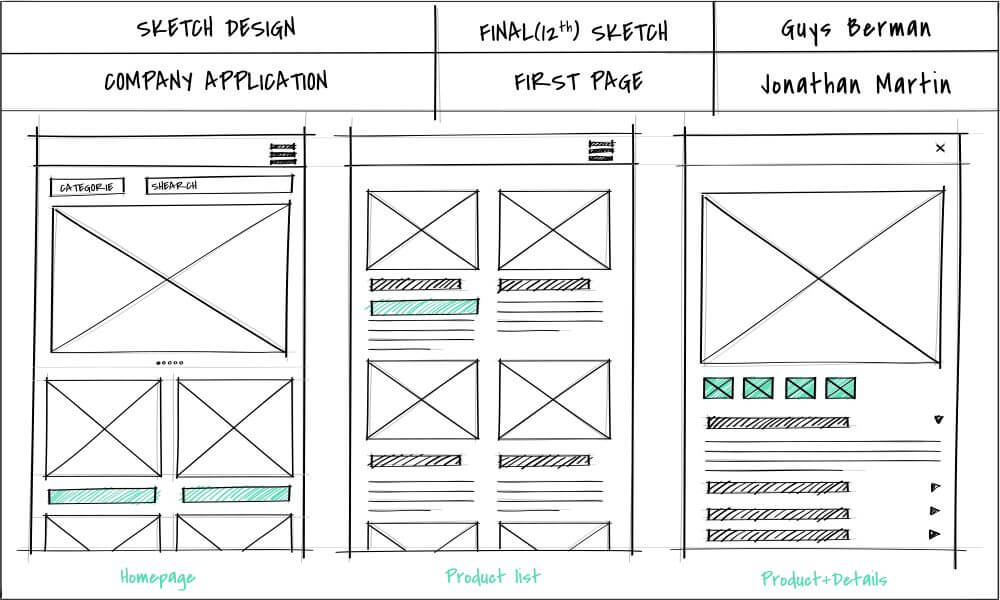
When you walk into a newly constructed building, you see walls, windows, doors, and furniture all in their proper places. But long before the paint went on the walls or the furniture was arranged, an architect created a blueprint — a visual plan of what the building would look like and how it would function.
In the world of digital products like websites and mobile apps, a wireframe plays a very similar role.
Whether you're designing a new app, building a website from scratch, or improving an existing user interface, the first step is to map out what goes where and how everything connects. This early planning stage is crucial to ensure that your design makes sense, is user-friendly, and meets the business goals.
That’s where wireframes come in.
A wireframe is a simple visual guide used to suggest the structure and placement of content, functionality, and navigation in a user interface. It strips away the colors, images, and fancy fonts to focus purely on usability and layout. It's the backbone of UI/UX design—used to visualize ideas, test concepts, and align teams before moving into high-fidelity design and development.
Wireframes act as a communication tool between designers, developers, product managers, and stakeholders, ensuring everyone is on the same page from the start. They allow teams to iterate quickly, make better decisions early, and avoid costly changes later in the design cycle.
What is a Wireframe?
A wireframe is a basic visual guide that represents the layout and structure of a user interface (UI). Think of it as the blueprint of a digital product—like the architectural sketch of a house before it's built.
Wireframes focus on:
- Layout of content and features
- Placement of UI elements (buttons, menus, images, etc.)
- Navigation flow between screens or pages
They do not include final design elements like colors, fonts, or images. Instead, they use simple lines, boxes, and labels to communicate functionality.
Why are Wireframes Important in UI/UX?
Wireframes serve several purposes in the design process:
1. Clarify Requirements
Before diving into visuals, wireframes help designers, developers, and stakeholders agree on what the product needs to do and how it should behave.
2. Speed Up Design Iteration
It’s much quicker (and cheaper) to test and revise wireframes than to redo full visual designs or code.
3. Improve User Experience
Wireframes allow UX designers to focus on user flow, usability, and information architecture early in the process, which improves the overall user experience.
Types of Wireframes
1. Low-Fidelity Wireframes
- Simple sketches or black-and-white layouts
- Focused purely on structure and layout
- Created using pen/paper or tools like Balsamiq
2. Mid-Fidelity Wireframes
- More detailed with accurate spacing and placement
- Start to include specific content or UI patterns
3. High-Fidelity Wireframes
- Almost like a grayscale version of the final design
- May include actual content and annotations
Common Elements in a Wireframe
- Headers and footers
- Navigation bars
- Search fields
- Content blocks or cards
- Buttons and call-to-action elements
- Placeholder images
- Form inputs (text fields, dropdowns, etc.)
Wireframe Tools You Can Use
- Figma
- Adobe XD
- Sketch
- Balsamiq
- Axure
- Whimsical
These tools help you design wireframes digitally and share them with your team for feedback and iteration.
Wireframe vs. Prototype vs. Mockup
| Term | Purpose | Fidelity |
|---|---|---|
| Wireframe | Structure & layout | Low |
| Mockup | Visual design (colors, fonts) | Medium-High |
| Prototype | Interactive simulation | High |
Conclusion
Wireframes are an essential step in the UI/UX process. They allow teams to align on structure, functionality, and flow before investing time in design and development. Whether you’re building a simple website or a complex app, wireframing is a smart starting point for creating intuitive and user-friendly interfaces.

